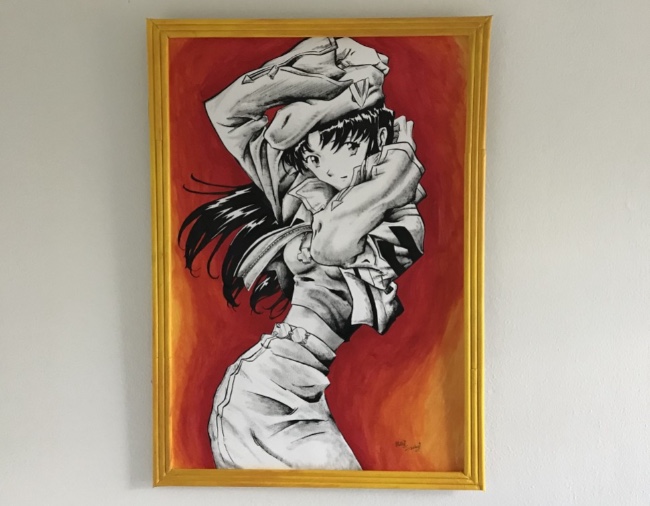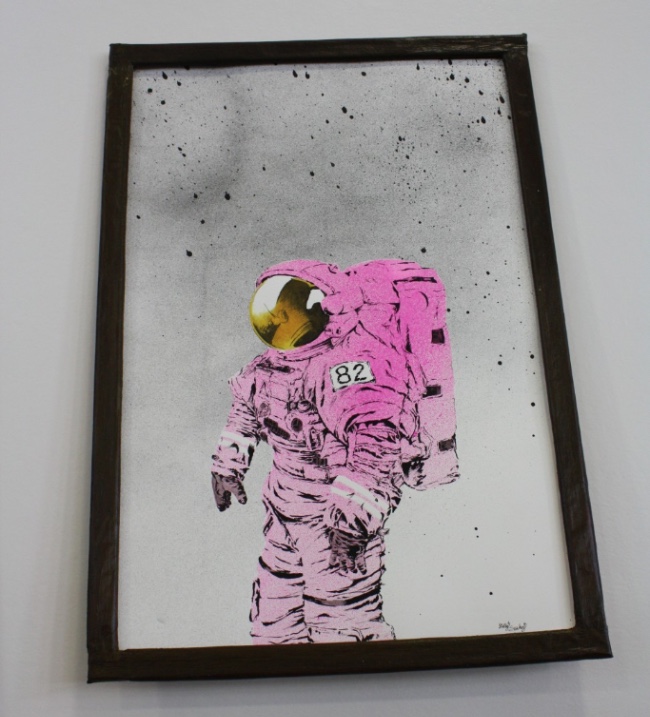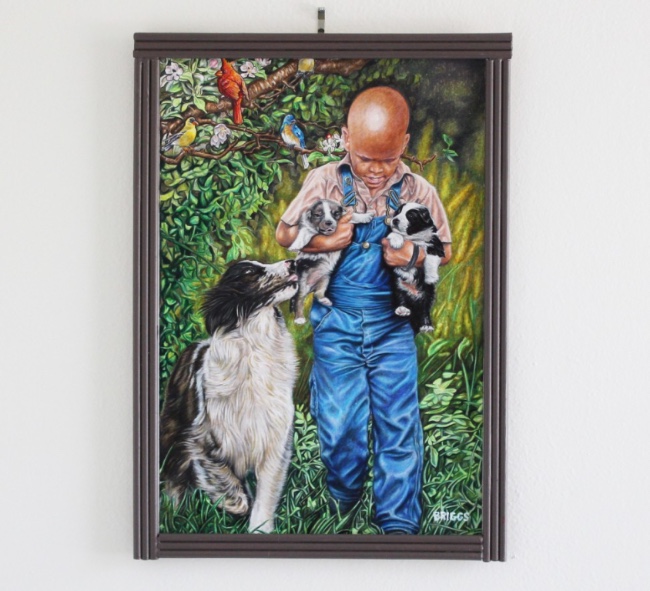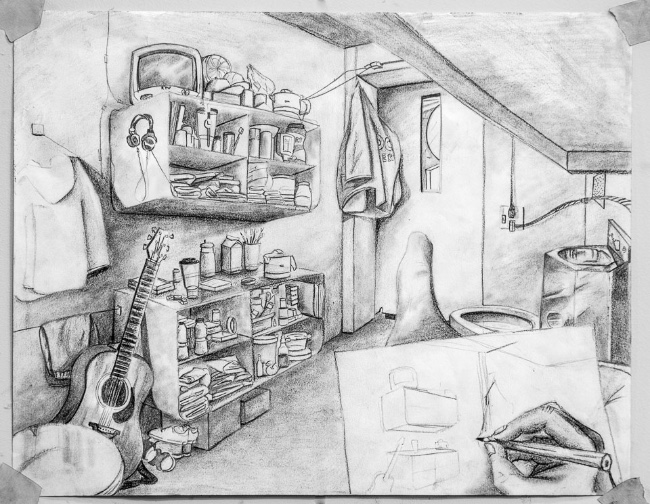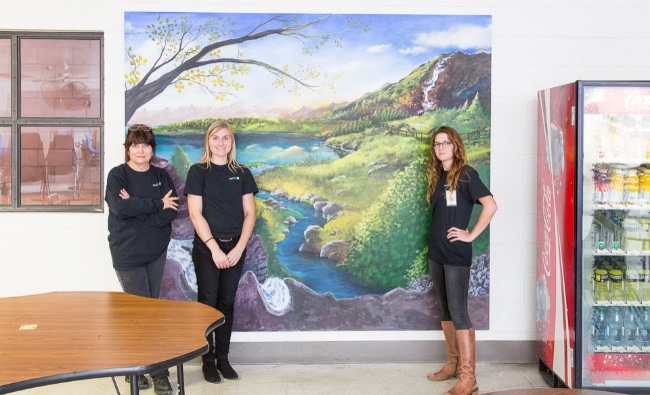
Last May, an art show opened in San Diego that drew a small, art-loving crowd to look at the works on display. In many ways, it was just like any other gallery opening — the artists were on hand to answer questions, the public interacted with them, and those with the means/interest bought pieces. But in this case, artists and patrons sharing a pop-up gallery space was remarkable — because every one of the artists was an inmate at the Richard J. Donovan Correctional Facility in San Diego. In fact, the show took place behind its walls.
“It was such a cool opportunity for the inmates to get to really see that people were excited by their work, to answer people’s questions, and just to see the looks on people’s faces,” Project PAINT founder Laura Pecenco, 33, says.“It really was just priceless.”
Project PAINT — an organization created to bring art opportunities to prisoners— had done shows before. But those were in galleries and museums. This was the first show of its kind for them, one that integrated the public and the incarcerated artists in one space. And in the starkness of the prison environment, where divisions amongst people — the free and the incarcerated; the guards and the inmates; one ethnicity vs another — feel set in stone, it was a breath of fresh air to have a reason for everyone to celebrate, together.
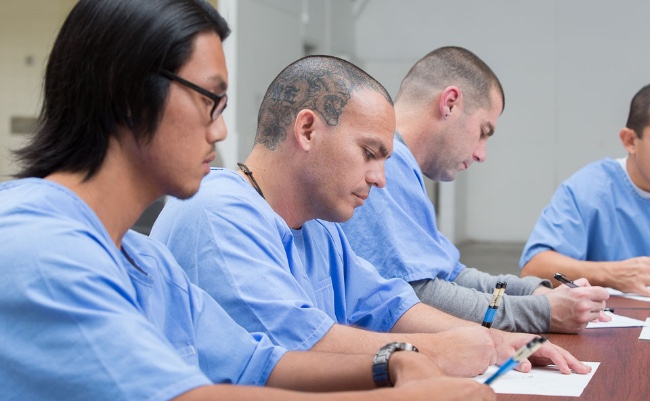
We all know America has a problem with prisons. They’re growing, and at a rapid pace. According to the NAACP, in 1980 there were about 500 thousand people incarcerated in the U.S. By 2015, that number was 2.2 million. And by country, the United States holds about 5% of the world’s population, but 21% of its prisoners. In part, this is because once in prison, inmates aren’t typically leaving for good once they’ve served their sentences. The overall recidivism rate in the U.S. is around 70% within five years of release.
Research shows that this doesn’t need to be the case. One program in New York has worked to expand educational opportunities in the prisons by offering a curriculum that includes core subjects like math and science but also things like art and philosophy. In the existing university program it’s based on, among the inmates that participated, only four-percent reoffended, and that number went down to two-percent when they completed a degree — that’s in comparison to the overall recidivism rate in the New York State prison system which sits at 40 percent.
Education seems to be the key to lowering recidivism rates. A study by the Rand Corporation, looked at the results of 50 studies over the last 30 years to understand the impact of giving prisoners educational opportunities. They found that education reduced recidivism by about 13 percent on average. And even with factoring in the added costs of providing those opportunities, not having those people go back to prison saves tax payers money. For every $1 put into prison education, it saves an average of $4-$5 in the long term overall.
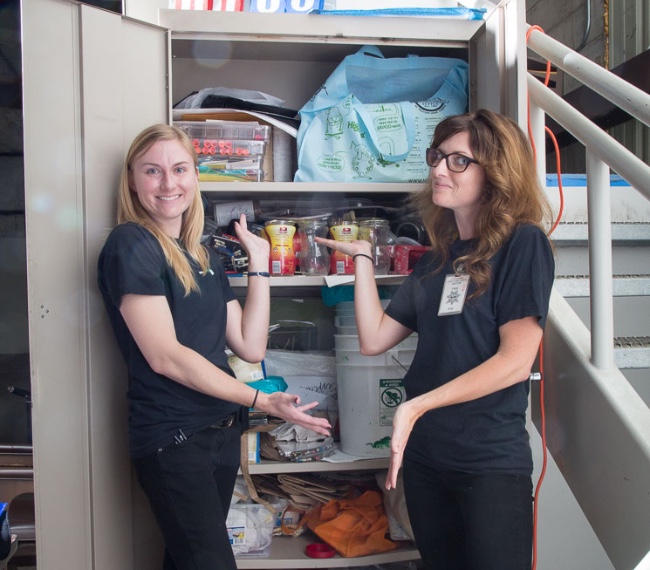
Laura Pecenco was 18 when she first started working with prisoners.
“All of my preconceptions were immediately thrown out the window,” she says. “They (the inmates) would bring in these really, just sort of plain notebooks and they would be like, “Oh, these are my doodles.” They were these beautiful pieces of art. I kept saying, “‘This is not a doodle. This is really, really beautiful work.’ That was something that kind of stuck with me.”
A few years later, she returned to the memory of great art in prison when she was picking a graduate research project. It felt like teaching in prison would hit her passion points by combining art with the study of how masculinity is expressed and gender performed. It would allow her to study while also helping people. The only problem was: California had cut arts education out of its prison budget in 2010.
“My committee said, ‘I don’t know that you’re going to be able to do this, Laura,’” she says. “I was like, ‘Nope, I am sure I’ll make it happen. I’ll just figure something out.'”
She began reaching out to people involved in arts in the community and soon had a volunteer program going. Using those connections, she piggybacked into a creative writing program in the prison which got her foot in the door to meet the warden and get approval for an art class.
That was 2013. Fast forward to today and Project PAINT is thriving.
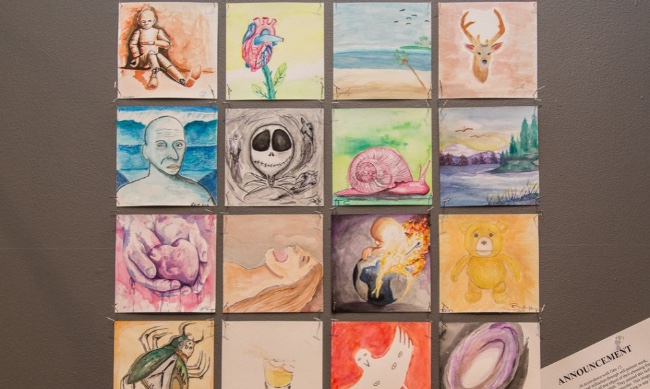
It’s different teaching painting in a prison. There’s less artistic spontaneity to some degree, because everything has to be meticulously planned. Before doing anything, work orders and memos have to be signed by the warden and multiple administrators. Supplies have to be checked and rechecked. Bags are searched and personal items are confiscated. Every single thing a student uses, down to the erasers, have to be checked out and cataloged. And instructors have to be creative with supplies.
How do you work on a paper project when you can’t bring in scissors?
“You realize, I do have all sorts of other tools at my disposal,” Pecenco says. “I just have to tear this paper really delicately. You improvise. That’s something that I feel like I really learned from the participants.”
Differences aside, once each session has started, it’s an art class. Students work to create something beautiful or powerful or whimsical. And like any other art class, teachers move around the space helping them and discussing their projects. This can get emotional.
“Art has a way of making you inherently vulnerable,” Pecenco says. “You have to have that vulnerability for things to be good art. Of course, that’s subjective, but we try to teach them that it’s so much more than just copying something in a realistic way —that art has emotion and what we’re asking them to do really does kind of force them to express that emotion.”
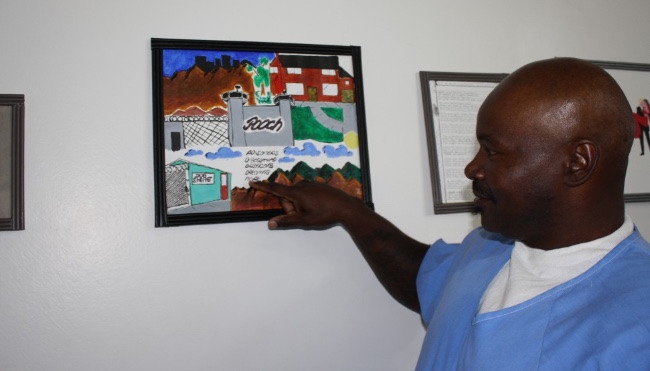
Project PAINT isn’t just interested in educating students about techniques, but in facilitating their emotional and intellectual growth. Participants learn about different artists, art history, art movements, and spend time processing their own pieces through weekly reflection assignments
“As a sociologist, I’m huge on writing and reflecting on their experiences and thinking about how the arts apply to people all around us,” Pecenco says. “One of the things that warms my heart is when someone who has been a bit reticent to share in the past is able to open up when we’re talking about their pieces.”
Often, she sees communication skills improve for inmates through the program.
“Art gives us a tool in which to express ourselves,” she says. “You can point to different elements of your piece and it gives you a prompt for what it was that you’d been feeling.”
After creating pieces, prisoners can choose to send artwork home to their families or donate pieces to the program (where it’s often sold to raise money for more classes and supplies). So, while inmates cannot profit from their art directly, they do benefit from it in multiple indirect ways.
“One guy hadn’t spoken with his family in six years — since he’d been incarcerated,” Pecenco says. “His kids wouldn’t talk to him.”
He tried reaching out to them, but they never answered. So, after starting the program, he began sending his daughter pieces he made.
“He said, ‘I finally was doing something that I felt proud of, that I felt like I had put effort into,’” Pecenco says, starting to cry. “And he said, ‘I was thinking about my daughter when I was creating these pieces. I wanted her to at least to know that that’s what I was thinking, that I was trying.'”
It took months, but finally, the inmate’s daughter wrote him a letter back saying she couldn’t deny that he was making changes in his life, not when the evidence was there, right in front of her. It was a means towards reconciliation for the family.
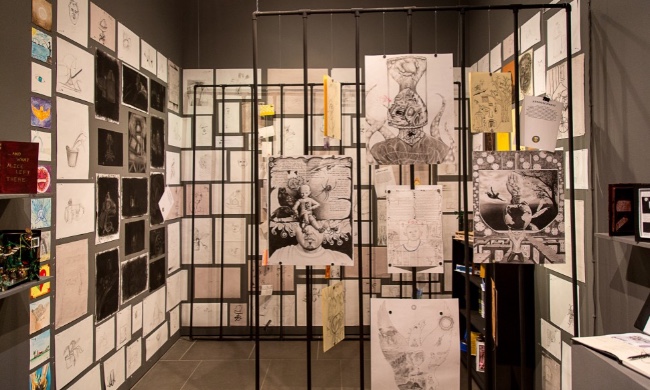
Another benefit of the initiative is that the project allows prisoners to look forward to something — motivating them in recovery. When an inmate relapsed from his addiction and was sent to the hole, he told Pecenco.
“The only reason I stopped using again was that I missed the class. I missed making art. I couldn’t have access the supplies, I couldn’t do anything.”
She sees the positive results all the time, but Pecenco still has to combat the mindset that arts education isn’t worth it, or that prison should be more about punishment than reform. One way she does this, is by sharing all the benefits that affect people on the outside. Like the fact that programs such as this create a safer workspace for guards. Prison guards have a job so dangerous that one study showed 85-percent have seen someone seriously injured or killed, and 30-percent have been seriously injured themselves — leaving many with PTSD, depression and a high rate of suicide. But a study in England showed that introducing an arts program reduced disciplinary action by 29 percent for the prisoners who participated — showing education in prison makes an environment safer for everyone.
“These are ultimately our neighbors,” Pecenco stresses. “95% of people who go to prison, they’re going to be released and they’re going to return to the community that they came from. It helps all of us if we have people returning who are folks who we’d want to have as our neighbors. We want the people who return to have a whole set of skills and to contribute to our communities positively.”
